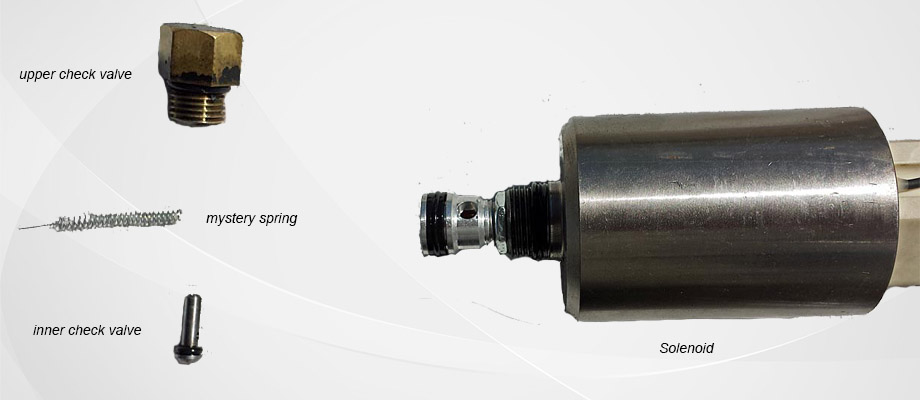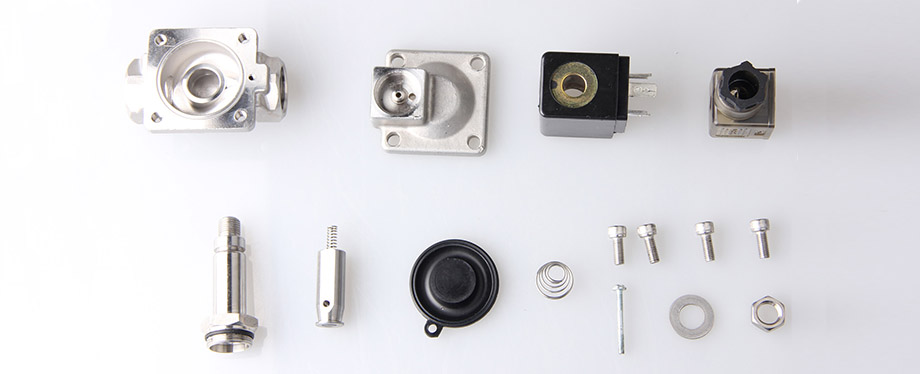For hydraulic system or hydraulic equipment, hydraulic solenoids are the basic elements that create a force to pull the valve spool to control the direction, pressure, and flow of hydraulic fluid. Hydraulic solenoids, also known as the solenoid for hydraulic valves.
In hydraulic control systems, hydraulic solenoid is a connecting link between the preceding and following process. The main function of hydraulic solenoid is to convert the electrical power into mechanical energy to drive the actions of hydraulic valves. Properly speaking, hydraulic solenoid includes two parts, the solenoid coils, and armature motion elements. In Hydraulic solenoid market, the two parts are sold as a full set. In real engineering machinery maintenance practices, one of the common sources of damage is solenoid coil burnt out. Therefore, in the following content, we will mainly focus on the maintenance of hydraulic solenoid coils.
Hydraulic Solenoid Basic
The most common hydraulic solenoid types are on-off solenoid and proportional solenoid. On-off solenoid is normally installed on hydraulic directional valve to control the directional shifting of hydraulic valves and the unloading and uploading of hydraulic system. Proportional solenoid is normally installed on all types of hydraulic proportional valves to control the directions, pressure, and flow of hydraulic fluid. Moreover, there are a large number of hydraulic proportional pressure valves are installed on electric variable pumps to control the flow and directions of the pumps.
Unlike normal on off solenoids, the magnetic force of proportional solenoids remains the same in proportional solenoid working strokes. This attractive force characteristic is formed by the special shapes of hydraulic working gas clearance and the leading of magnetic force of the magnetizer. The difference between on off solenoid and proportional solenoid does not fully depend on the solenoids themselves. When the proportional solenoid reaches its largest electric current, the proportional solenoid is acting like on off solenoids. And if we electrified the on off solenoid with different electric currents, on off solenoids can also generate different push forces.

Hydraulic Solenoid Performance Index
The performance index of hydraulic solenoids includes rated voltage, rated force, rated stroke, etc.
Based on different electric voltages, hydraulic solenoid can be divided to 12V DC solenoid, 24V DC solenoid, 110V AC solenoid, 220V AC solenoid, etc. The commonly rated forces of hydraulic solenoid NG6 is about 20N – 70N, and the commonly rated strokes are between 3 – 7mm. If you suspect that the hydraulic solenoid valve is blocked or the solenoid coil is burnt out, please turn over the hydraulic valve and see if its rated stroke is in the common stroke range.
The external characteristic of hydraulic solenoid is the electrical resistance. The most common 24V hydraulic solenoid NG6 maintains the electrical resistance range of 16 – 26Ω. The electrical resistance range of 24V hydraulic solenoid for cartridge valves is between 20 -38Ω. The electrical resistance range of 24V proportional solenoid is between 21 – 26Ω. Theoretically speaking, the electrical magnetic force is in proportion to the square of the current, so the electrical resistance value of 12V solenoid is about a quarter of the 24V hydraulic solenoid resistance.
For proportional solenoids, the electrical current must reach a certain range. For example, proportional solenoid for Rexroth 24V proportional valves requires a current range between 200 – 600mA, 12 V proportional solenoid for Rexroth valve need a current between 400 – 1200mA.

Hydraulic Solenoid Maintenance Advises
When the hydraulic valves are without actions, you can measure the resistance between hydraulic solenoid coil wiring insert 1 and 2. If the resistance value is infinitely great, it means the internal circuit has been cut off. If the resistance value is small, it means there is an internal short circuit fault, so you have to change the hydraulic solenoid. Both the circuit cut off and short circuit fault are caused by the solenoid coil overheat. In order to reduce the block problems of hydraulic valves, many hydraulic solenoid manufacturers will reduce the resistance value of solenoid coils to increase the push force. But in that case, the overheating problem of solenoid coil has been increased, too. After a few minutes of constant electrified, the internal temperature of hydraulic solenoid will probably over 100℃. Therefore, in the actual process of applications, we must not only pay attention to the heat dissipation of hydraulic valves, but also cut the powering time. The hydraulic solenoid coil has high power frequency is easier to be burnt out.
Normally, we use a milliammeter to measure the hydraulic solenoid coil resistance. If there is not one, you can use a piece of iron wire or a small screw driver to push the plunger. It can also check the working status of hydraulic solenoids. Or, you can also take a spanner close to the hydraulic solenoid, see if there is enough force.

